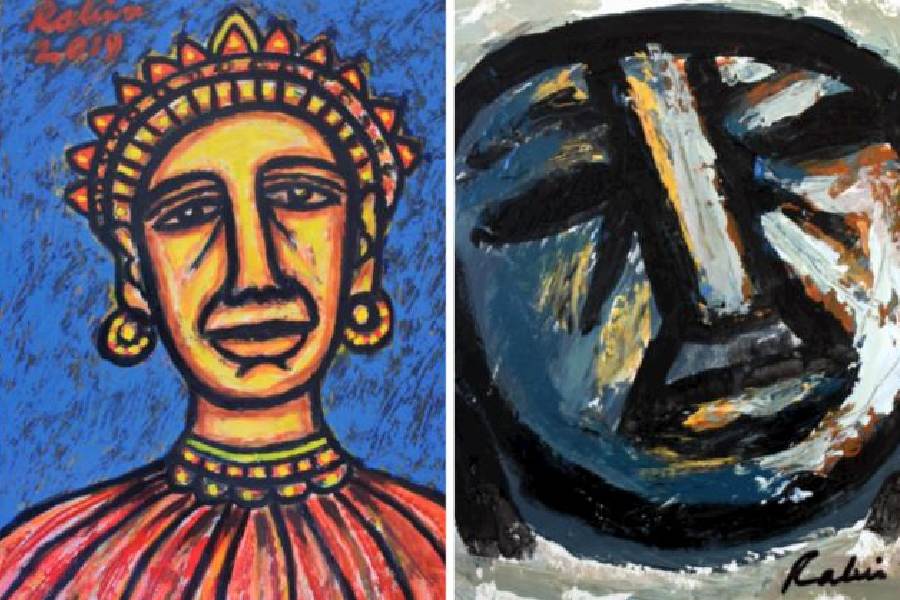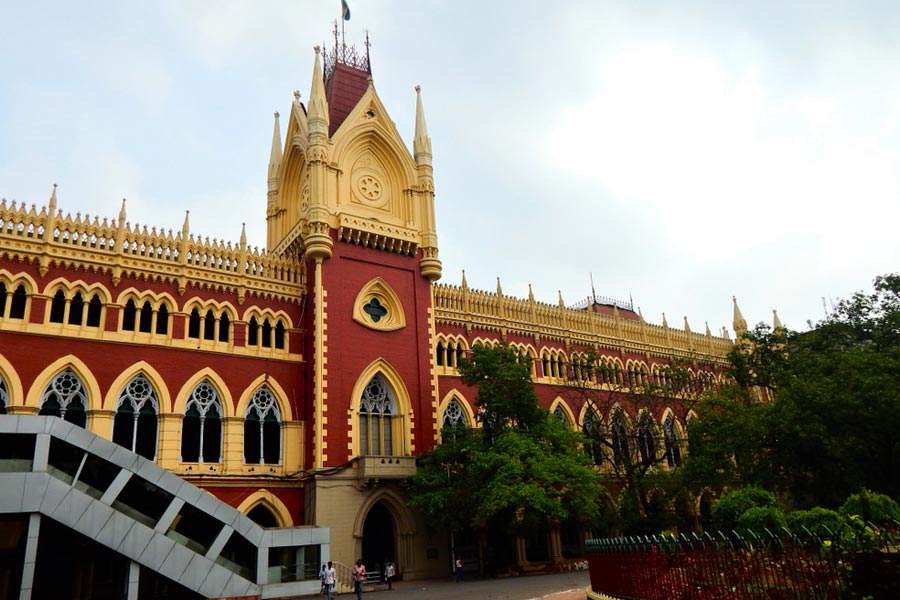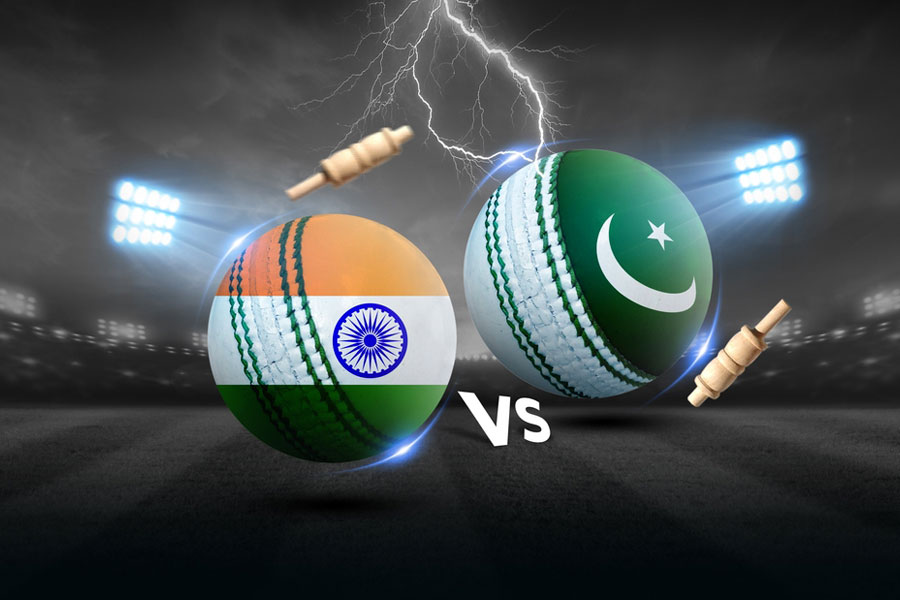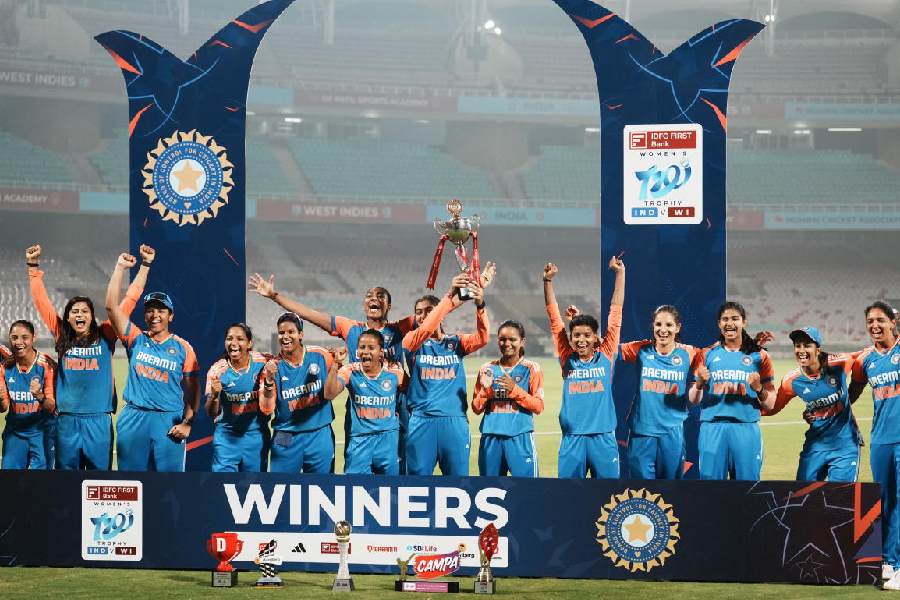Debovasha’s Faces: An Exhibition of Paintings & Drawings by Rabin Mondal (May 11-22) featured many works done during the last years of the uncompromising artist who was born in Howrah in 1929 and died at the age of 90 in 2019. However, this exhibition held no surprises. It turned out to be a procession of craggy heads and, occasionally, sinewy bodies. Mondal had laid thick layers of paint, which sometimes formed a dense crust of pigment that accentuated the ruggedness of the faces he painted. The contour lines of the faces were almost invariably firm and black, emphasising the pensiveness, anguish and pain that distorted their visages. Many of them had the power of primitive sculpture and looked like they were hewn out of granite. Mondal had slathered paint on the canvas and modelled the facial features of his portraits the same way that a sculptor would have.
Having been brought up in Howrah — an industrial town back then — to which people from the neighbouring districts and states flocked in search of work, Mondal was aware of the poverty and the inhuman living conditions these people experienced. This finds expression in much of his work. Unlike most others, artists of Mondal’s ilk did not care much for the demands of the market and did whatever most appealed to them. Instead of flesh tones, Mondal preferred the entire range of greys, greens and blues that heightened the tough and weathered look of the faces, quite in keeping with the underclasses and indigenes he portrayed. Some of the backgrounds of these portraits are brightly hued, throwing the grim tones of the faces in striking contrast.
Even when he is painting nude women, there is no attempt at either sexualising or glamourising them. The female form is reduced to its basic structure, resembling a geometric drawing in a monochromatic painting, and could easily be mistaken for a pre-historic icon. In another painting, a bejewelled indigene is painted in bright, contrasting shades. The artist’s self-portrait — a line drawing — is a testimony to his self-deprecation.











